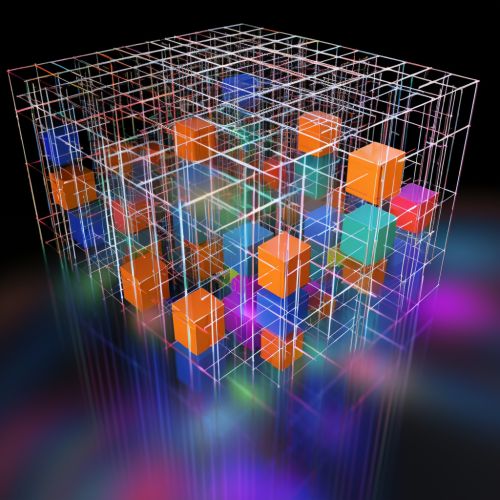Density Matrix
Introduction
The Density Matrix is a matrix that describes the statistical state of a quantum system. It is a fundamental concept in quantum mechanics, particularly in the field of quantum statistical mechanics. The density matrix provides a mathematical representation of the state of a quantum system, encompassing both pure states and mixed states.
Definition
The density matrix, often denoted as ρ, is defined for a quantum system that may be in a superposition of states. For a system in a state |ψ⟩, the density matrix is given by the outer product of the state vector with its own bra vector, ρ = |ψ⟩⟨ψ|.
Properties
The density matrix has several important properties which make it a useful tool in quantum mechanics. These properties include:
- Hermitian: The density matrix is a Hermitian operator. This means that it is equal to its own conjugate transpose, ρ† = ρ.
- Trace: The trace of the density matrix, denoted Tr(ρ), is equal to 1. This property reflects the fact that the total probability of finding the system in some state must be 1.
- Positivity: The density matrix is a positive operator. This means that for any state |ψ⟩, the expectation value ⟨ψ|ρ|ψ⟩ is non-negative.
Pure and Mixed States
In quantum mechanics, a system can be in a pure state or a mixed state. A pure state is a state that is completely specified by a single state vector, while a mixed state is a statistical mixture of different pure states.
- Pure States: For a system in a pure state |ψ⟩, the density matrix is given by ρ = |ψ⟩⟨ψ|. The density matrix of a pure state has trace equal to 1 and its square also has trace equal to 1, Tr(ρ²) = 1.
- Mixed States: For a system in a mixed state, the density matrix is a statistical mixture of the density matrices of the pure states that make up the mixture. If the system has a probability pi of being in state |ψi⟩, then the density matrix is given by ρ = Σ pi |ψi⟩⟨ψi|.
Applications
The density matrix is used in various areas of physics and engineering, including quantum mechanics, quantum statistical mechanics, quantum information theory, and quantum computing.
- Quantum Mechanics: In quantum mechanics, the density matrix is used to describe the state of a quantum system. It is particularly useful in situations where the system is in a superposition of states or when the exact state of the system is not known.
- Quantum Statistical Mechanics: In quantum statistical mechanics, the density matrix is used to describe the statistical state of a quantum system. It is used to calculate expectation values and other statistical properties of the system.
- Quantum Information Theory: In quantum information theory, the density matrix is used to describe the state of a quantum bit, or qubit. It is used in the analysis of quantum communication and quantum cryptography protocols.
- Quantum Computing: In quantum computing, the density matrix is used to describe the state of a quantum computer. It is used in the design and analysis of quantum algorithms and quantum error correction codes.


